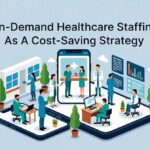Clinical trials are research studies conducted to determine the efficacy of medical, surgical or behavioral interventions. They are the most commonly used way that researchers assess whether new treatments, drugs or medical devices are safe and effective for use in humans. There are strict protocols governing these studies, and all of this is done in such a way as to ensure reliable and ethical results. All clinical trials are based on specific scientific questions designed to help medical professionals identify more efficacious treatments that improve patient outcomes.
Clinical trials are a varied bunch, enlisting healthy volunteers and patients with specific conditions alike. Researchers utilize some rigorous methods to make sure that the study’s findings will apply to a larger population. These trials provide the FDA and EMA as well as other regulatory agencies the information necessary to determine whether new treatments can be approved.
The Phases of Clinical Trials
Clinical trials go through several phases before a treatment is approved for public use. Each phase has its unique purpose and builds on the outputs from the previous phase.
- Phase I: A small number of healthy volunteers, or occasionally patients with the disease of interest, are included in this first stage. The primary aim is to evaluate safety, set appropriate dosage levels and assess any side effects.
- Phase II: Phase II trials test an expanded participant group to evaluate the treatment’s efficacy while continuing to monitor safety. Researchers collect more specific information about the way the drug or device works in the body.
- Phase III: Ensuring an even larger population, and comparing the treatment with standard options, which is a better comparison of the benefits and risks. Once the trial is successful, the data are submitted for approval to regulatory agencies.
- Phase IV: This is also called post-marketing surveillance which happens after the drug is approved by the regulators. Scholars are still tracking the long-term impacts of the treatment and rare side effects that could have escaped detection in earlier trials.
Problems Encountered in Clinical Trials
How do ethical considerations influence clinical research?
One of the major challenges in clinical trials is ensuring ethical compliance. Research is tightly bound by ethics, protecting the rights and the safety of participants. These are ethical considerations such as:
- Informed Consent: Health care professionals must ensure that participants are aware of the trial, including possible risks and benefits, before they agree to participate.
- Patient Safety: It is the responsibility of researchers to ensure that studies they design do so with risks minimized as much as possible and with appropriate medical care throughout the trial.
- Compliance with regulations: Trials must meet the criteria outlined by various health authorities, in terms of ethical and scientific integrity.
Independent review boards provide ethical oversight of any studies conducted, ensuring trials are responsible, thereby maintaining public trust in medical research.
What is the Challenges faced in Patient Recruitment?
Participant recruitment and retention is one of the biggest problems in clinical trials. There are a number of reasons for this challenge:
- Lack of information: Too many people don’t know that there are currently clinical trials and how to participate.
- Strict Eligibility Criteria: The inclusion and exclusion criteria of trials are often stringent, limiting the pool of participants who meet these requirements.
- Location biases: Many trials are geographically restricted, so people from rural areas may fail to join
- Fear and Mistrust: When people are afraid of clinical trials due to possible side effects or distrust of the medical system.
To aid recruitment, researchers have begun using digital tools, social media, and outreach programs to educate potential participants about the merits of clinical trials.
Benefits of Clinical Trials
Being part of a clinical trial has many benefits:
- Access to Cutting-Edge Therapies: Early provision of novel treatments can be critical at the end of life, especially when no currently available treatments may exist.
- Impact on Medical Progress: Data from clinical trials informs future practice and enhances the standard of care.
Participants are also subjected to close medical oversight during the course of the trial, which means their health status is constantly monitored. The knowledge gained through these studies are instrumental in the development of innovative therapies and medical technology.
The Future of Clinical Trials
Clinical research is going through dynamic changes with technology and innovative trial designs. Digital tools, artificial intelligence, and deployed trials are changing the game. Wearable technology, remote patient monitoring and electronic data capture systems democratizing and streamlining trials.
Decentralized clinical trials, where participants can join from their homes through telemedicine and mobile health technologies, are on the rise. These methods not only streamlining patient interaction but also better data capture and trial mobility. Clinical trials will remain at the cornerstone of the development of novel therapies and will play a critical role in the changing landscape of medical care as we know it today.
Did you find this helpful? Check out our other helpful articles on our website.
Read Also
- Revolutionizing Patient Engagement: Innovative Solutions for Improved Care and Treatment SuccessNavigating healthcare system can often feel overwhelming for patients. Between appointments, prescriptions, and treatment regimens, it’s easy for crucial details to get lost in the shuffle. That’s why effective patient engagement and support solutions are more important than ever. Companies like Serva Health, with their pharma hub services, are stepping up to ensure that patients… Read more: Revolutionizing Patient Engagement: Innovative Solutions for Improved Care and Treatment Success
- On-Demand Healthcare Staffing As A Cost-Saving StrategyThis is an exciting and challenging time for the healthcare industry. Technology is advancing almost faster than humans can keep pace. New legislation is creating fresh challenges for the future of healthcare, and the shifting population demographic continues to place more pressure on healthcare facilities. Amidst these changes, healthcare facilities are facing a critical staffing… Read more: On-Demand Healthcare Staffing As A Cost-Saving Strategy
- Automated Healthcare Software Solutions: How Intelligent Platforms Are Redefining Clinical, Administrative, and Operational ExcellenceThe healthcare industry is undergoing a seismic transformation. Rising patient volumes, value-based care models, staffing shortages, and complex regulatory demands have prompted organizations to look beyond traditional tools and embrace advanced software automation. As providers search for innovative partners capable of tailoring these sophisticated systems to real-world workflows, many turn to MCSI (Managed Care Systems,… Read more: Automated Healthcare Software Solutions: How Intelligent Platforms Are Redefining Clinical, Administrative, and Operational Excellence
- The Benefits of Contract Labor Staffing in HealthcareThe most successful healthcare facilities today aren’t just reacting to crises—they are building workforce resilience to withstand them. Unpredictable patient demand, coupled with persistent nursing shortages, has made the traditional staffing model obsolete. Relying on mandatory overtime to cover a sudden surge in capacity is a recipe for high turnover and rising employee burnout relief… Read more: The Benefits of Contract Labor Staffing in Healthcare
- Why Whole Slide Imaging Shapes the Future of Digital PathologyWhole slide imaging has become one of the most important developments in modern pathology. It changes how tissue is examined, how cases are shared and how pathologists collaborate with the wider care team. More than a technological upgrade, it represents a shift in how laboratories think about their workflow, their storage needs and the tools… Read more: Why Whole Slide Imaging Shapes the Future of Digital Pathology
- Management Reinforcement for Healthcare Providers in a Shifting SystemHealthcare is changing faster than ever. So, providers are feeling the pressure to keep up. New technology, changing patient needs, and constant rule updates make it tough for managers to stay on top. Strong leadership helps teams work better, give great care, and stay happy in their jobs. Here’s how healthcare leaders can strengthen their… Read more: Management Reinforcement for Healthcare Providers in a Shifting System
- Why Effective Disinfection Remains the Foundation of Public HealthFrom hospitals and schools to transport hubs and food production sites, disinfection is central to breaking the chain of infection and protecting community health. The COVID-19 pandemic highlighted how crucial surface hygiene and environmental control are in reducing the spread of harmful microorganisms. Yet, beyond emergency response, routine and validated disinfection practices remain the cornerstone… Read more: Why Effective Disinfection Remains the Foundation of Public Health
- How to Navigate Your Medical Assistant Career PathBecoming a medical assistant can feel both exciting and a little stressful. This job lets you work closely with doctors and other healthcare workers to help patients. But with so many different paths to take, it can be hard to know where to start or how to plan your career. Wouldn’t it be nice to… Read more: How to Navigate Your Medical Assistant Career Path









